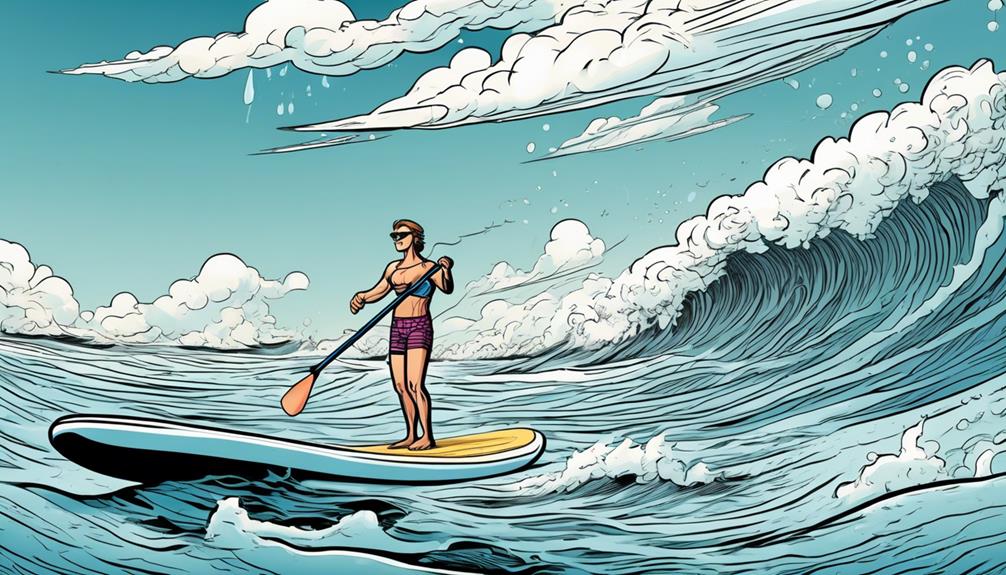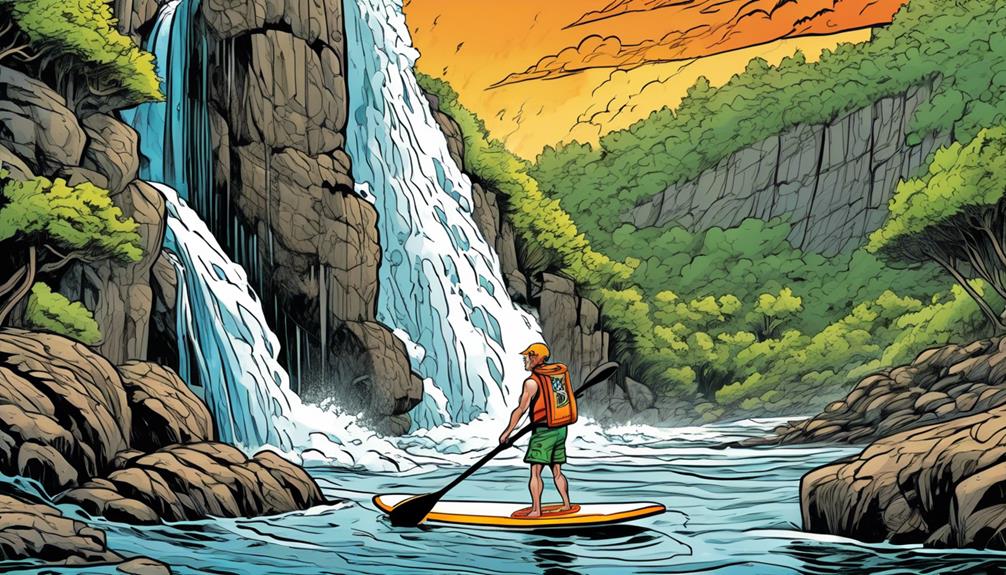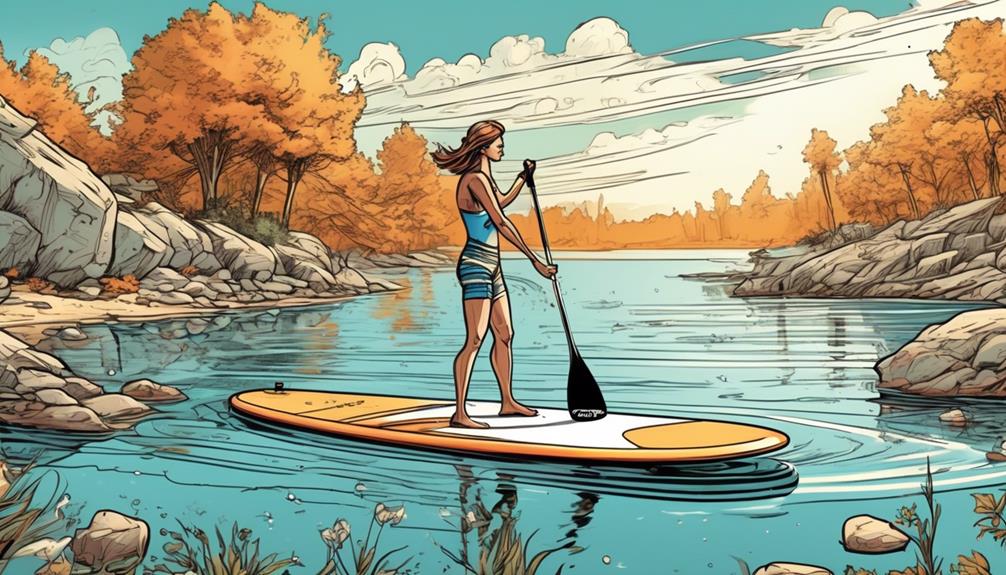Venturing into the world of inflatable paddle boarding is thrilling, but let's get real—can you just hit up any body of water with your board? It's not as simple as you might think.
First off, you've got to consider the type of water you're eyeing. A peaceful lake versus the wild ocean? Big difference. Then there's the whole deal with local regulations. Yeah, some places have rules that might cramp your style. And don't even get me started on safety. It's non-negotiable.
From personal experience and a bit of digging into the data, I've found that your best bets are places like lakes or calm rivers. But here's the kicker: statistics show that the majority of paddle boarding incidents occur in unpredictable waters. No surprise there, right?
So, before you pump up your board and set out, consider this: Are you picking the right spot? Are you brushed up on the local laws? And most importantly, are you geared up for safety? Stick with me, and I'll guide you through making your paddle boarding adventure not just exhilarating but smart and safe too.
Key Takeaways
- The ideal water conditions for paddle boarding depend on personal preferences and skill level, with calm lakes being ideal for beginners and the ocean presenting challenges such as waves and currents.
- Navigating local regulations is important to ensure compliance and respect for the environment and communities, as regulations can vary and include speed limits, restricted zones, and permit requirements.
- Safety considerations include wearing a Personal Flotation Device (PFD), using a leash to stay connected to the board, carrying a whistle for emergencies, and using visibility gear to be more visible to boats and rescuers.
- Different water environments offer various benefits and experiences, such as serene lakes reducing stress levels, rivers providing a thrilling experience and improving endurance, coastal paddling allowing encounters with marine life, and urban waterways providing a unique perspective on the urban landscape. Inflatable paddle boards are versatile and suitable for different water environments.
Understanding Water Conditions

To safely enjoy inflatable paddle boarding, understanding specific water conditions is key, and trust me, I've been there. You're probably thinking, 'Isn't it just about standing up and paddling?' But hear me out – different environments demand unique strategies, and I've got the real-world examples and data to back it up.
Starting with calm lakes – they're the playground for beginners. Why? Because they offer a serene paddling experience with minimal external challenges. It's the perfect setting to get your feet wet (pun intended).
But when you switch to the ocean, it's a whole different ball game. You're not just dealing with flat water anymore. The ocean throws waves, tides, and currents at you. According to the National Oceanic and Atmospheric Administration, tides can change water levels by up to 20 feet in some areas, significantly impacting your paddle boarding experience. So, it's not just about balance; it's about reading and understanding the dynamic water beneath you.
Now, let's talk rivers. They come with their own set of challenges, like flow rates and potential obstacles. Before a river trip, I always check the United States Geological Survey (USGS) for flow rates and water levels. Why? Because knowing if you're stepping into slow-moving waters or facing challenging rapids can make or break your trip. For instance, a flow rate above 500 cubic feet per second (cfs) on certain rivers can transform a leisurely paddle into a strenuous workout.
Weather is another game changer. I've learned to keep an eye on the forecast because sudden wind or rain can flip a calm paddle into a tough slog. Did you know that wind speeds of just 15 mph can significantly increase the difficulty of paddle boarding? It's all about being adaptable and knowing when to pack it in.
Navigating Local Regulations
Before you hit the water with your paddle board, getting clued up on local regulations isn't just smart; it's essential. Trust me, I've learned this the hard way. From one spot to the next, the rules can flip faster than you can fall off your board.
In some places, paddle boarders are practically celebrities, while in others, you've got a list of dos and don'ts longer than your paddle. And we're not just talking about where you can pop your inflatable board into the water. There are speed limits, restricted zones, and sometimes even permit requirements to think about.
Now, when I'm planning an adventure, my first stop isn't the water; it's the local authority's website or office. You'd be surprised how often regulations change. Environmental concerns, seasonal shifts, and safety protocols can all trigger updates. In some areas, for example, you might need to wear a life jacket at all times or even register your board as an official watercraft.
But here's the kicker: abiding by these rules isn't just about avoiding a fine or a telling-off; it's about respecting the environment and the communities that call these waterways home. Staying on top of the latest regulations means I'm doing my part to prevent damage or disruption. It's a simple step, but it plays a huge role in fostering a sustainable and respectful paddle boarding culture.
So, let me give you a real-life example. In Lake Tahoe, paddle boarders are required to have a leash and life jacket on board at all times. Skipping on this couldn't only put you at risk but also land you a hefty fine. On the flip side, in some protected marine areas, launching your board might be off-limits during certain months to protect local wildlife. Ignoring these rules could mean harming the very ecosystems we love exploring.
In essence, if you're planning to paddle board, do yourself (and everyone else) a favor: check those local regulations. It's not just about keeping the fun police at bay; it's about preserving these beautiful spots for years to come.
Safety Considerations

Safety gear on the water isn't just some trendy accessory; it's your lifeline while paddle boarding. If you're like me, you've learned, sometimes the hard way, that nature's beauty comes with its own set of risks. So, let's get straight to the point and talk about what you really need to stay safe and why these items are non-negotiable.
Personal Flotation Device (PFD): Let's cut to the chase. Wearing a PFD isn't about looking cool; it's about staying alive. Data shows that a significant number of water-related accidents could have been prevented with a PFD. It's not only a smart choice, but in many places, it's also the law. Think of it this way: would you rather be caught off guard by a sudden change in water conditions, or be prepared and float comfortably knowing you've got your back covered?
Leash: Ever heard the saying, 'Stay attached to what keeps you safe'? Well, in paddle boarding, that's your board. A leash keeps you connected to your board, which acts as a large flotation device if you fall in. But not all leashes are created equal.
- Coiled leashes are your go-to for flatwater, minimizing drag and keeping the leash on top of the board rather than in the water.
- Straight leashes, on the other hand, are your best bet for surf conditions, avoiding entanglement with underwater obstacles.
Whistle: It might seem old school, but a whistle can be a lifesaver. It's the simplest way to signal for help in emergencies. Trust me, when you're out there and need assistance, a loud blast from a whistle can be heard far and wide, cutting through noise better than shouting.
Visibility Gear: Being seen is being safe. Bright colors make you more visible to boats and rescuers. Also, consider adding a light or flag to your gear for those foggy mornings or late afternoons when visibility drops. I've read countless stories of paddle boarders who credit their high-visibility gear with getting them noticed and rescued in potentially dangerous situations.
Knowledge of weather and water conditions is crucial. Always check the forecast and be mindful of changes. From personal experience, it pays to be cautious rather than face unpredictable dangers unprepared.
Paddle boarding combines adventure with tranquility, but it's your responsibility to prioritize safety. By focusing on these essentials, you're not just preparing for the “what ifs” – you're ensuring that your time on the water is enjoyable and, above all, safe. Remember, being prepared with the right gear isn't just about following rules; it's about making smart choices based on real-world data and experiences. Stay safe out there, and happy paddling!
Ideal Locations for Paddling
Calm lakes, folks, are your go-to for a zen-like paddling experience. Trust me, paddling here isn't just about getting a workout; it's about silence that's almost tangible.
Picture this: you're out there at dawn, the surface of the lake is so smooth it's like glass, and the only sound is your paddle gently breaking the surface. Studies have shown that water-based activities in calm environments can significantly reduce stress levels, and from personal experience, I can vouch for that. Perfect for beginners or those of us looking to clear our heads.
Now, if you're up for a bit more of a thrill, gentle rivers are where it's at. The key here is the word 'gentle.' We're not talking white-water rafting levels of adrenaline, but there's something utterly satisfying about letting the current aid your journey. It's a bit like life, isn't it? Sometimes, you just need to go with the flow. Data from outdoor recreation sources indicate that paddling down rivers can improve your endurance and spatial awareness, as you're constantly navigating and adjusting to the flow.
Coastal areas step things up a notch. This is where you get the salt in your hair and maybe, if you're lucky, a dolphin or two swimming alongside you. The biodiversity you can encounter is astounding, with coastal paddling offering a front-row seat to marine life that you just can't get from the shore. However, this comes with its own set of challenges – tides and weather can be unpredictable, so always check local marine forecasts. According to the National Oceanic and Atmospheric Administration, being aware of tidal patterns can enhance your paddling experience by ensuring you're working with the environment, not against it.
Then there's something unexpectedly magical about urban waterways. You might think, 'Urban and paddling? Really?' But hear me out. Paddling through a city combines the thrill of exploration with a unique perspective on the urban landscape. It's about seeing the familiar from an entirely new angle. Data from urban recreational studies show that people who engage in water sports within city limits report a higher level of satisfaction with their urban living experience. Plus, navigating through cityscapes can sharpen your paddling skills in ways open water can't match.

